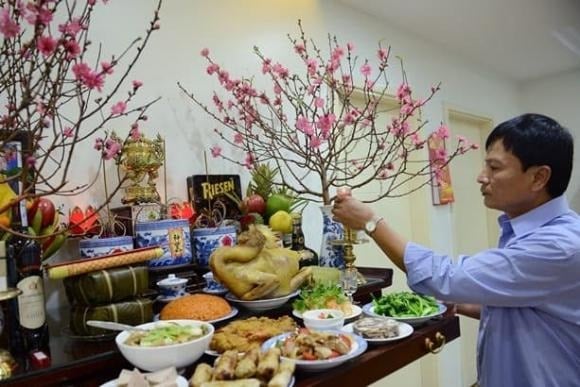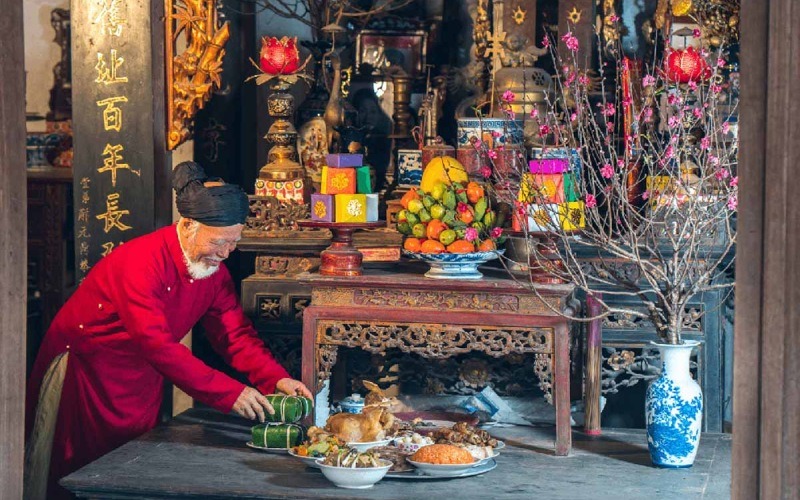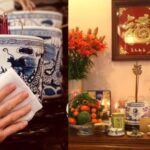As the Lunar New Year approaches, it is customary for Vietnamese families to pay special attention to the cleaning of their ancestral altars, being mindful of certain taboos and rituals to usher in good health and prosperity for the coming year.
During the last days of the lunar year, apart from mental preparation and festive shopping, cleaning the ancestral altar holds significant importance as it serves as a venue for sending off the Kitchen Gods and the New Year’s Eve ceremony.
The ancestral altar holds a sacred and revered place in every household, serving as the focal point for essential rituals and ceremonies. Thus, when cleaning the altar, it is imperative to be mindful of specific rules and taboos to prevent any misfortunes or negative impacts on the physical well-being and fortune of the family.
Timing for Ancestral Altar Cleaning
Traditionally, the process of cleaning and arranging the ancestral altar commences on the 23rd of the twelfth lunar month, coinciding with the farewell ceremony for the Kitchen Gods.
This timeframe is considered ideal for initiating the cleaning and preparation of the altar. However, the cleaning process typically concludes before the New Year’s Eve deadline, when all tasks must be completed.

Incense Offering to Ancestors
Prior to embarking on the physical cleaning of the ancestral altar, it is customary to prepare a fruit offering and light incense as a sign of respect. Through this ritual, the family head seeks permission from the ancestors and deities, informing them of the impending altar cleaning. This is usually done after the incense has burned out, purifying the air for the upcoming task.
Using Warm Water for Cleaning
It is recommended to use warm water to clean the altar, the tablets of the ancestors, and the incense burner, avoiding cold water to prevent displeasing the ancestors. Firstly, prepare a clean cloth specifically for wiping the altar, or use a new broom and cloth.
Subsequently, prepare warm water for cleaning, which can be infused with ingredients such as cloves, eucalyptus, cinnamon, sandalwood, anise, or ginger-infused alcohol. You may purchase ready-made solutions or prepare your own by boiling water and adding these ingredients to create a warm infusion for cleaning the altar.

Rules for Cleaning the Ancestral Altar
According to spiritual experts, the crucial rule when cleaning the altar is to work from top to bottom. Begin by cleaning the tablets before proceeding to the incense burner.
When cleaning statues, use a soft cloth to prevent damage or paint loss. Refrain from using harsh chemicals, detergents, or alcohol to clean bronze statues to avoid oxidation and discoloration.
While cleaning the incense burner, hold the tablet firmly and maintain a steady hand to prevent shifting or dislodging during the process. Use a damp, clean cloth, and you may spritz it with perfume, five-spice powder, or ginger-infused alcohol for a pleasant aroma. Ensure that the statues and incense burner remain stable throughout the cleaning process.
Trimming the Incense Sticks
Start by placing a clean sheet of paper underneath the incense burner. Carefully pluck out the incense sticks one by one to avoid disturbing the burner. During the cleaning process, take care not to move the burner. Hold it firmly with one hand while plucking the incense sticks with the other to prevent breakage.
After removing the incense sticks, use a clean spoon to scoop out excess ash from the incense burner and close its lid. Remember, throughout the cleaning process, maintain a respectful and reverent attitude.
What to Avoid When Cleaning the Ancestral Altar
Be cautious not to break any ritual objects, as these are sacred and integral components of the altar.
When removing incense sticks, try to leave no more than five old sticks behind. After plucking them out, burn the incense sticks to ash before discarding them, ensuring they do not end up in unclean places.



































